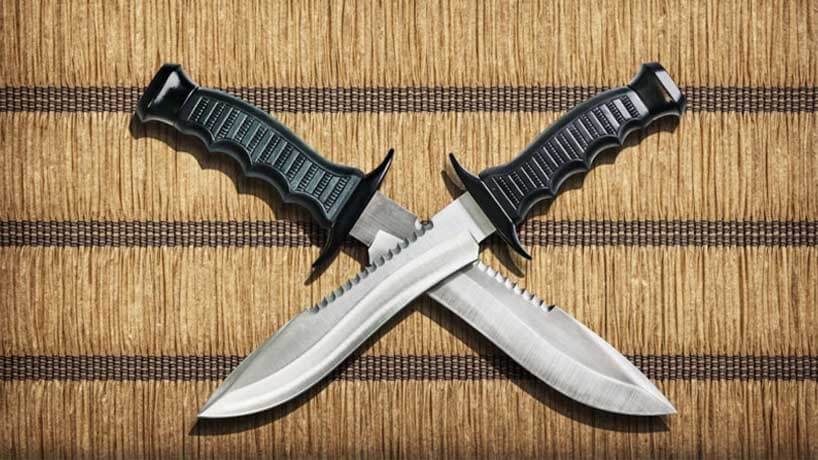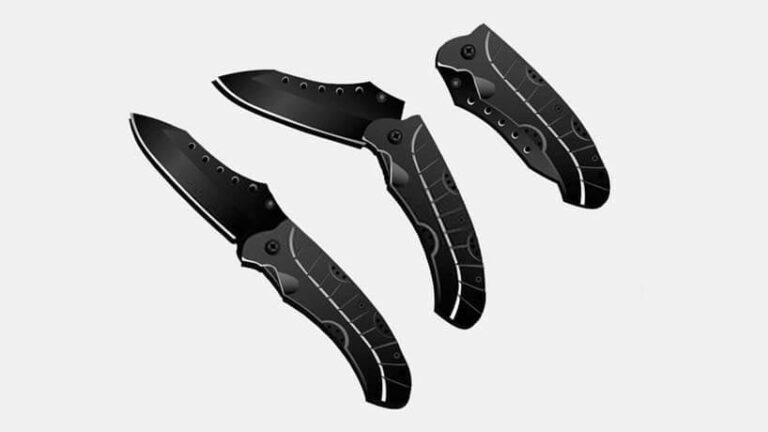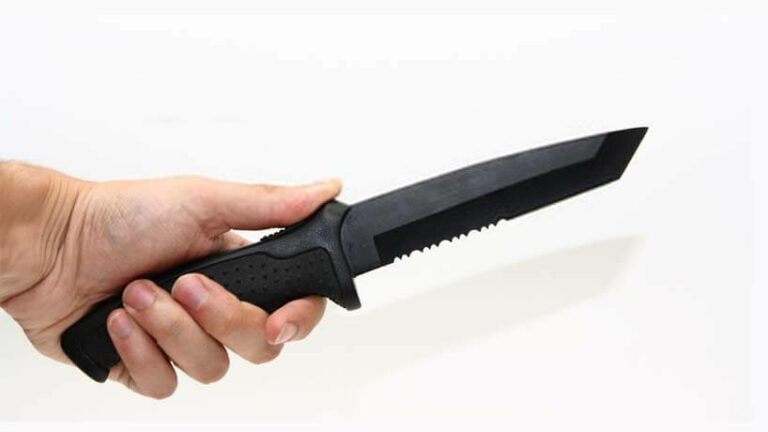Dating back to the early 19th century, the Bowie knife has established itself as a fearsome and exceptionally capable outdoor knife. It’s been reimagined and improved over the years, though the original design has stood the test of time. Bowie knives are still widely used in hunting, tactical, and outdoor activities.
These behemoth knives are powerful and exceptionally durable. Once you’ve used a great Bowie knife, it’s hard to make the switch back to other blade types. The biggest issue you’ll face when deciding what you want in a bowie knife is the variety. Due to their age, there are loads of variations on the market.
From bone and horn handles to modern glass infused fiber, you have a massive selection to choose from – and that’s where we come in. We’ll guide you through what to keep an eye out for, what’s important, and how to get the right Bowie knife for you!
By the time we’re done, you should feel confident and have a clear idea about what you want in your next Bowie knife. You’ll be able to answer our “What is a Bowie knife?” question without hesitation. Let’s jump in!
What Is a Bowie Knife?

As you might know, the name Bowie comes from the legendary colonel Jim Bowie, who fell in the Battle of the Alamo. This rocketed the bowie knife to fame and it quickly became widely adopted as the go-to outdoor and tactical knife. Most Bowie knives fall into the 5” – 12” range and the different sizes have their pros and cons.
Most practical-use Bowie knives are full tang and quite heavy. They need to be solid enough to handle cutting wood, but accurate enough to descale a fish and strip a pole. Bowie knives are widely used in hunting for gutting and skinning. They’re ruthlessly efficient and easy to work with once you’ve had a little practice with them.
You’ll also find these knives on the backpacks or belts of outdoor enthusiasts, hikers, and campers. They’re lighter than machetes and hatchets, and quite easy to lug around when sheathed. All these factors come together to bring you a versatile and functional outdoor powerhouse.
It’ll cover all your heavier-duty needs and can even chop branches off trees for a campfire. The original Bowie knife had a clip-point tip, with a slight curve in the blade’s spine leading up to it. Nowadays, there are many different options.
You can get your hands on a dual-edge Bowie, options with a serrated cutting edge on the blade’s spine, or a sharply curving cutting edge. Now that we have a little background on what made these knives so popular, let’s take a look at what you should keep an eye out for when choosing a quality Bowie knife.
What Makes a Great Bowie Knife?
It would be a good idea to write down what you think is important on a Bowie knife. This list should be personalized and ranked. For example, I don’t like a Bowie blade to be less than 8” long. I cut a lot of wood and do loads of clearing with my Bowie – so I need something heavier and larger.
It’s enough to write down your top 5 requirements. This will help you decide where to spend your money and what gives you the best bang for your buck. If this is your first Bowie and you don’t know what you’re looking for – don’t stress. Read through the below features and decide which of them resonate best with your needs and planned uses.
Handle
There is tons of variety here. If you’re happy to spend the extra cash and want an aesthetically unique handle, you can get a Bowie with a handle made from staghorn. Some are made from bone too. These typically cost quite a bit more, so if you’re looking to get your money to travel further you can get a standard wood handle.
Just be warned that these consist of two halves joined together and are inherently more vulnerable to warping and damage. If you want to go more modern, there are composited handles and glass infused fiber options. They’re typically cheaper but stray further away from what the traditional Bowie used.
Steel
Bowie knives need to be sharp! Since you’ll be using them mostly outdoors, stainless or high-carbon steels are your best bets. You want steel that has good edge retention and the ability to handle aggressive chopping without chipping.
We could talk all day about steel and steel quality, but it’s enough to remember that cheap Bowie knives usually go for cheaper steel. Finding the right balance between price and functionality here might take a little trial and error.
Size
You can find Bowie knives as small as 5” and as large as 12”. Just remember that the larger you go, the heavier and bulkier they are. You need to balance this against how you plan to use the Bowie. If you need a knife for some light campsite shrub clearing, there’s no need for the largest Bowie knife.
If you plan on cutting small trees down, then you need the weight and power of the larger knives. I find that any Bowie with less than a 6” blade is a little impractical and loses a lot of the functionality that makes these knives famous.
What Is a Bowie Knife Used For?

As we’ve already touched on, Bowie knives are used for mostly outdoors. Whether you need something for quick and easy landscaping in your garden, or you’re a seasoned hiker, the Bowie can handle it all. If you’re going to be using your Bowie for heavier duty chopping, then you need to choose your knife carefully.
Make sure the steel is strong and has good edge retention – but isn’t brittle. Hunters use Bowie knives for gutting and skinning their kills. The exceptionally sharp cutting edge makes quick work of thicker hides and the sharp tip can easily puncture and gut. The curved cutting edge also means that you won’t accidentally pierce important organs while skinning.
Larger Bowie knives can make quick work of poles, branches, and logs that aren’t too thick. You can easily chop up firewood for a quality fire. They’re also great at clearing bushy campsites. They aren’t as long as machetes and so you don’t need much swinging space. Their curved and top-heavy blades give them excellent chopping power without tiring your hands and arms quickly.
Bowie knives can also be used for general utility work, indoors and out. They’re well-suited to descaling fish and stripping bark. You can even use it to cut and peel fruit on the go. These are incredibly versatile knives that quickly earn their place in your toolkit or knife collection.
How to Use a Bowie Knife
Hold the knife firmly in your dominant hand – unless you’re dual wielding it with a pistol – just kidding! Most Bowie knives have a dual-hilt where the handle meets the blade. Your hand should grip the handle close to the hilt in a standard ax-grip.
If you’re swinging the blade more (for chopping wood), it’s okay to let your hand slide a little further down the handle for that extra power. The handle usually thickens out toward its base, so you don’t need to worry about losing your grip. Most Bowie knives have rather large and heavy handles, so you’ll get quite a good overall blade balance regardless of where you grip the handle.
When you’re carving shapes out or doing tougher cutting, it’s okay to use your other hand to put pressure on the blade’s spine. You obviously can’t do this if there is a dual-cutting edge or a serrated portion on the spine.
Bowie Knife vs Kukri Knife
Commonly confused with each other, the Bowie and the Kukri knife are quite similar. While both knives are on the large side, the kukri is quite a bit larger. It’s closer to the size of a machete. The kukri also features a far more prominent curve. You’ll immediately notice the pronounced difference between the blades when viewed side-by-side.
Another difference is the Bowies hilt. The kukri doesn’t have a hilt and the transition from handle to blade is rather seamless. The final major difference is the tip style. Kukri knives have a more curved tip and aren’t designed for piercing.
The Bowie knife, on the other hand, has a very sharp tip with exquisite piercing power. Other than these major differences, the uses of these knives overlap quite a bit. They’re both excellent at chopping and slicing.
Final Thoughts
You should have quite a clear idea of what you’re looking for. Hopefully, you were able to write down some of the features that are important to you and your planned uses.
Take what you’ve learned here from this “What is a Bowie knife?” guide and put your new knowledge into practice. You have everything you need to make the right choice and get a Bowie knife that you keep around for years to come. Happy chopping!







